Due to my travel schedule, I was unable to operate the contest from
central Texas. Mark
N5OT was very generous in offering me the use of his station in Osage
county, Oklahoma, even though he was not going to be there himself that
weekend. This was my first HF contest effort from outside of the state
of Texas.
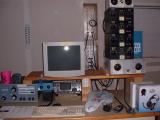 |
My wife and I arrived at the station around 8:30 PM local time Friday night
before the contest. Mark had set up the operating position with a single
Icom IC-746PRO transceiver, an Alpha 86 amplifier, a WX0B SixPak and
another two position coax switch for antenna switching, and the six high
power tuners, one for each band of operation. The headphones and the plastic
bag (with a W9XT Contest Card and associated cabling for Icom radios) are mine.
|
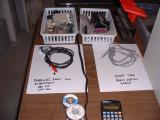 |
Mark did an excellent job of laying the parts of the station out so
that I could assemble the logging computer (with my W9XT Contest Card inside)
quickly. As I was doing a Phone Only entry, I didn't actually use the
parallel port CW interface. I ended up not using the DVK, either, but that
was not Mark's fault.
|
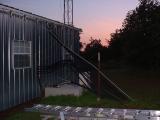 |
The station itself is inside a 30'x50' wood-framed metal-sided building.
Mark has some of the finest exterior cable management I've ever seen in
a multi-tower station of this scale. The tower next to the station had a
tribander on it fixed south.
|
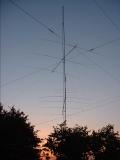 |
The N5OT station has two 140' towers that support almost all of the directional
antennas. The three-element 40 meter yagi is just above the 80' guy point.
All the other antennas are below it.
|
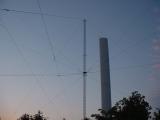 |
The central tower of the station setup serves as a guy point for two of the
other towers, as well as the support for the 80 meter and 160 meter wire
antennas. The Osage County water tower in the background is 100' high, and
roughly west of the radio towers. Flushing the toilet was not a problem.
|
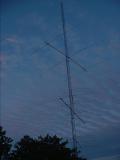 |
The other 140' Rohn 55G tower at the station had essentially identical antennas
at identical heights, just offset by 90 degrees azimuth.
|
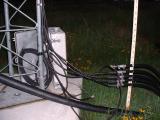 |
The cabling at one of the 140' tower bases. Mark uses hardline on the
runs up the tower and on the buried runs to the station, with more flexible
coax jumpers in between. A color coding scheme by band helps identify to
which antenna each feedline is connected. The rolled up coax was part
of the phasing system for 10 meters. The metal box was just sitting there -
probably waiting for some future project.
|
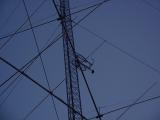 |
I think there must be a story about this.
|
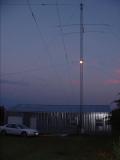 |
The station at sunset.
|
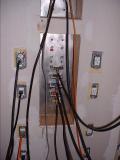 |
Except for the tribander, N5OT feeds all of his high band antennas in
phase, all the time so as to create a "spray" pattern to both the NE and NW.
The coax comes from each tuner to this bulkhead panel, where it divides
evenly to the NE and NW towers. 80 meters and 160 meters each had only
one fixed antenna.
|
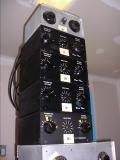 |
Six high power antenna tuners, one for each band. Mark was kind enough to
preset them for the phone bands before I arrived. The only one I really
had to tweak during the contest was the 20 meter tuner.
|
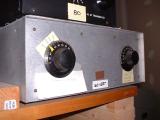 |
The antenna tuner for 160 meters. The piece of paper you can't quite read
says "This paper is for friction." Mark has gutted both the 160
meter and 80 meter tuners and rebuilt them as single-band tuners with
heavy-duty components.
|
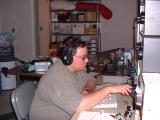 |
I am tuning for mults on 20 meters, sometime in the 0000 UTC hour.
I think the white dust on my shirt sleeves was from bumping into the
not-quite-finished walls.
|
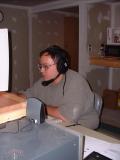 |
I am calling CQ on 40 meters. The thing on top of the amplifier
is a WWVB-tuned clock (with its antenna behind it.)
|













